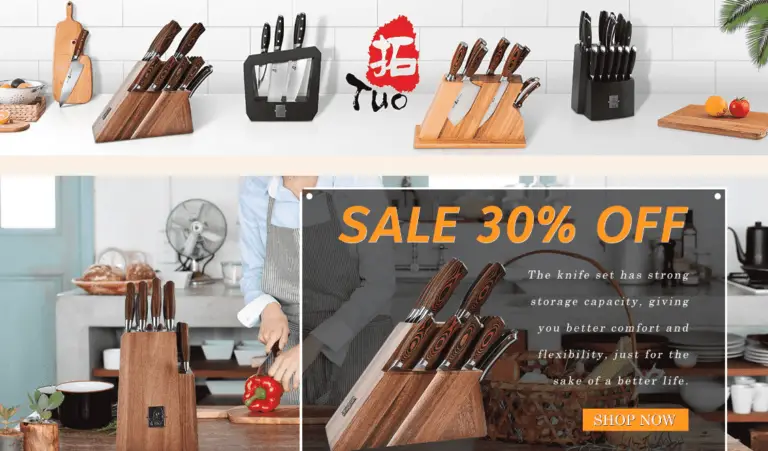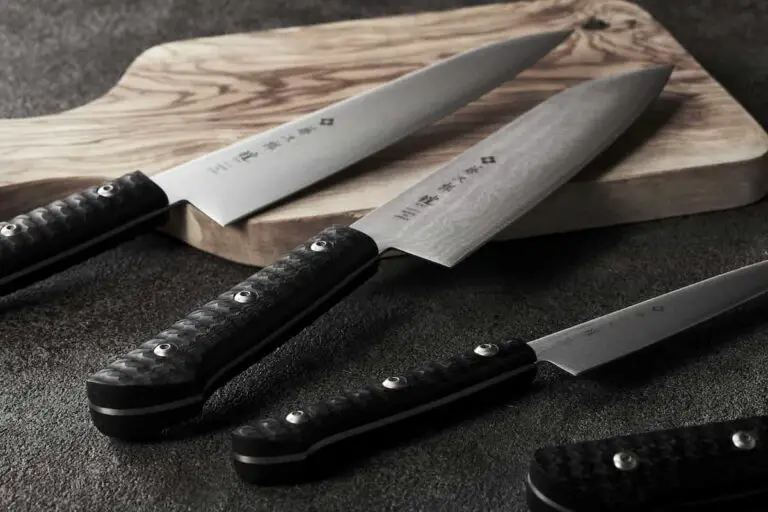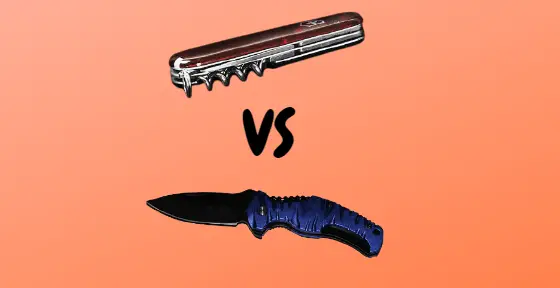The Whiteknuckler knives are a well-hidden secret that I also stumbled upon. I don’t know why they’re not out there even more for an all-American brand making fine hand-designed knives like this.
Do they have something to hide, or do they choose to keep flying under the radar?
Find out in this in-depth Whiteknuckler knives review.
Table of Contents
What Is the Whiteknuckler Brand?
Most knife brands I worry about reviewing and checking out only make knives.
I have found out that in most cases where a brand makes knives and other things, they are most likely outsourcing the knife making. That’s why I don’t bother with them.
That’s not the case with the Whiteknuckler brand, and I will get into that later in this review.
The Whiteknuckler brand has been here for over a decade, investing in a niche that caters to truckers, hotrodders, motorcyclists, climbers, and general outdoor lovers.
They break the bias in these hobby niches by creating a section specifically for the ladies, so they neither feel left out nor lost in the sea of men’s products.
Besides their knives, this brand also does good work in hats, belts, wallets, outdoor clothing, and other gear sections.
Where Are the Whiteknuckler Knives Made?
All Whiteknuckler knives are made in the USA with locally sourced parts and labor. Since its inception, the company has been making its products in the USA, maintaining high quality and craftsmanship.
The Whiteknuckler brand also uses American D2 steel, sourced from local manufacturers. This variant of the 440 high carbon stainless steel retains its edge well for longer, sharpens faster, and comes out of the box.
All other products from Whiteknuckler are also made in the USA to the highest quality by the local American staff that the company employs.
As of this writing, the company maintains that it employs eight (8) people who help create and ship these knives, among other products.
Are Whiteknuckler Knives Hand Forged or Stamped?
Whiteknuckler is open about the manufacturing process of their knives and claims that they are stamped.
The brand rightly mentions that it wouldn’t be able to maintain its current quality and meet its product demand at the current price if they were hand-forging these knives.
This is one of the reasons why Randall knives are so expensive – and it can take several years to get one after placing an order.
I like that they came out straight instead of trying to bypass that question. The good news is that they have some of the best stamped knives out there anyway.
If you have used enough knives, you would know that Whiteknuckler Knives make better knives than some brands claiming to hand-forge their blades.
What Knives Do Whiteknuckler Brand Sell?
A simple look at their catalog page shows that they have developed a series of knives. They also specialize in one-off limited-edition knives that could become a collectible in the future.

Some of the standout knives that the Whiteknuckler brand carries include:
The Convertible III Series
This Convertible series represents over a decade of tweaking and getting things right, hence the III naming system. Users interested in picking one up will have to cycle through the different options offered by the brand.
These options keep the same traditional core steel material and feature American leather sheaths. They mainly differ in the handle/ knife scales, which can be made of different materials or designed with other patterns.


I would recommend the Leatherwood Convertible III if you were shopping around for one of these, but it’s best to look at everything they offer first. It usually comes down to personal choice, and you might like a plain pick over the patterned ones.
Knives in the series: Blackout Convertible III, Leatherwood Convertible III, Blackout Leatherwood Convertible III, Classic Osen Convertible III, Classic Fade Convertible III, Royal Honey Convertible III, American Black Walnut Convertible III, Cocobolo Convertible III, Leopard Wood Convertible III.
The Model 3
I haven’t been following this knife brand long enough to know which were their Models 1 and 2. If I would guess, they have phased out the older models in favor of this new one.
Like the Convertible series above, these Model 3 blades are no slouch also.

The most significant difference between the Model 3 and the Convertibles is the lack of a hole in the blade. When I discussed why some knives feature blade holes, I mentioned that it could be both for function and aesthetics – which Whiteknuckler was able to balance in the above model.
For the Model 3, they appeal to traditional fixed knife lovers and carriers who don’t want to EDC a flashy blade. They would rather have something that works that they could take in and out without drawing extra attention.
If that sounds like you, this Model 3 is everything you want and more.
Knives in the Series: Blackout Model 3, Leatherwood Model 3, Blackout Leatherwood Model 3, Sano Manila Model 3, American Black Walnut Model 3, Cocobolo Model 3, Leopard Wood Model 3.
Should You Buy the Whiteknuckler Knives?
I look at several things before I decide to put money on a knife.
If you have been following from the top, you already know that I am impressed with what this USA-based brand is doing. To fulfill all righteousness, let’s get this done with:
Materials of Make
Whiteknuckler doesn’t slack in this department, opting for American D2 steel with a high carbon steel rating.
They don’t shy away from mentioning their core steel, which I appreciate so much about them. I also love the fact that this is a core steel that holds up to its name and promise/
When using high carbon steel knives, you have to take extra care and maintain it better than any other knife. For that premium feel and sharpness that the knife offers, it tends to rust faster than basic stainless-steel knives.
But then, why do basic when you can get the premium appeal?
Furthermore, the handles are almost like they were out of an 80s book. The Whiteknuckler brand chooses not to be boring with interesting picks such as leatherwood, cocobolo, leopard wood, solid brass, and charred bone, among other things.
In their brand statement, they did mention that they would like to sell you knives which could become the start of a family heirloom. Given the choice of materials that go into these knives, I don’t doubt that they could make that happen.
Build Quality
When I was looking at where knife brands factories are located in the world, I gave higher points to the American brands.
If I was looking to buy any knife, the countries that could sway me are:
- America
- Japan – especially if the knife is made in Seki city; and
- Germany
Besides those three, I would only consider knives made in Yangjiang city of China.
That’s not to say that knives made elsewhere are bad, but I am not a fan of their build quality.
Since the Whiteknuckler knives are made in the USA, I instantly knew that they would have a better quality control process around them. I wasn’t wrong!
From the blade finish to the handle fitting, the knife presents a uniform, continuous feel that makes it worth every penny. Since the knife is designed to function as a family heirloom where possible, I have extra assurances that they had been built to last.
Finally, this company kept refining its models told me everything I needed to know about their quest for perfection. They might not be perfect, but they are working towards it.
And that’s all the better for you and me.
Edge Retention
High carbon stainless steel is one of the best in the edge retention game, and they also come very sharp out of the box.
The American D2 steel is a high-carbon stainless steel variant, meaning it will stay sharp for longer, even under heavy usage.
This steel scores between 55-62 on the Hardness Rockwell scale, making the knife steel a high-end and durable one.
Once you get this knife, make sure you don’t take it to the whetstone every time you feel it is dull. You only need to sharpen it a few times per year as long as you use the knife right.
When it feels duller than before, hone the knife, and you’re good to go.
Versatility
The Whiteknuckler Convertible III blade hole might make it easier to handle, open and flick, but it reduces the knife’s versatility.
Don’t get me wrong.
The knife will still perform excellently in outdoor situations you deploy them to, but I doubt it would handle heavier tasks and the Model 3.
Extra steel support from the full-blade Model 3 gives it more strength to make deeper cuts, get more impact on knife cuts, and handle heavier tasks generally.
If you only use your knife for routine tasks and like the Convertible III design, go for it. If you prefer an all-rounder knife that does more than just the basics, you will get better value for money on your Model 3 knives.
Safety and Extras
Every Whiteknuckler brand knife ships with a fitting sheath for horizontal carry. The brand makes these sheathe such that they are safe for right- and left-handed users, which I cannot say for most other knife brands.
The Whiteknuckler blades are plenty sharp, so I appreciate how they made these sheaths of enough quality to withstand cuts. American leather is one of the top-quality picks out there, and you would use this one for very long.
I also like that their sheath is designed to be worn differently.
Although advertised as a horizontal sheath, you can wear it vertically if not sitting down. You can also choose to have it on the front or rear part of your trouser, and it would be just fine.
Before wearing the sheaths, check with your local knife laws and confirm whether you can carry a knife. If so, see if your knife meets legal requirements – and if you’re required to carry concealed or openly.
What Do I Like the Most About the Whiteknuckler Knives?
That would be the sheer quality of these blades.
There are no marketing gimmicks and no aesthetic tricks but trustworthy, solid American D2 steel that makes all the difference.
The steel is hard enough for strength and toughness when you need it but not too hard that it breaks under pressure. I also appreciate the premium handle materials that the brand has introduced right out of the box, among other things.
What I Don’t Like About the Whiteknuckler Knives
For knives this good and made specially by a small company, I suppose that some users would want to have theirs customized. This might be as a personal thing or for gifting, but Whiteknuckler doesn’t offer any of that.
I get that they would like to maintain uniformity in their operations, but when they can manage it, maybe they should create a department that handles custom requests.
As long as they can do that without losing the current quality, that is. Otherwise, we are better off with what they release into the market now.
Finally, I would appreciate it if they would start selling their knives via platforms like Amazon. They are doing such good work that I feel everyone else should be a part of, not just a few customers who know about them.
Should You Buy a Whiteknuckler Knife Today?
If you’re in the market for a good fixed blade EDC, you should.
Before this Whiteknuckler knife review, I had always been a fan of the Esee 3 and 4 series alone, but now, I have another fixed blade knife to recommend.
These knives tick all the right boxes, are made of high quality and are designed right in our backyard in the USA. As long as you’re looking for great value for money, you’ll find it on these knives.
On the upside, it could also become the start of a family heirloom.







